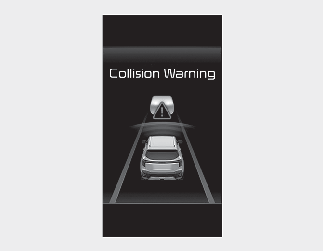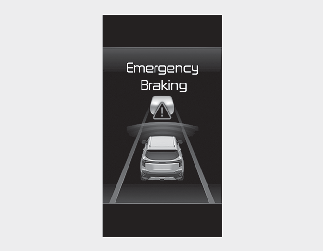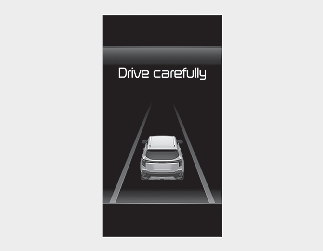Forward Collision-Avoidance Assist operation
Basic function
The basic function for Forward Collision-Avoidance Assist is to warn and help control the vehicle depending on the collision risk level.
-
Collision Warning
-
Emergency Braking
-
Stopping vehicle and ending brake control
Collision Warning

Collision warning will alert the driver with a warning message and an audible warning. Collision Warning will be activated in your driving speed and the following conditions.
-
For vehicle: 6~112 mph (10~180 km/h)
-
For pedestrian or cyclist: 6~50 mph (10~80 km/h)
Emergency Braking

The warning message and an audible warning to warn the driver that emergency braking will be assisted. The brake assist will be activated and it helps avoiding collision of a vehicle, pedestrian and cyclist. Emergency braking will be activated in your driving speed and the following conditions.
-
For vehicle: 6~37 mph (10~60 km/h)
-
For pedestrian or cyclist: 6~37 mph (10~60 km/h)

The function operation range may decrease due to the front traffic condition or the surroundings of the vehicle.
Stopping vehicle and ending brake control

When the vehicle is stopped due to Emergency Braking, the 'Drive carefully' warning message will appear on the cluster.
For your safety, the driver should depress the brake pedal immediately and check the surroundings.
-
Brake control will end after the vehicle is stopped by emergency braking for approximately 2 seconds.

-
For your safety, only change the settings after parking the vehicle at a safe location.
-
The driver should hold the responsibility to control the vehicle. Do not solely depend on Forward Collision-Avoidance Assist. Rather, maintain a safe braking distance, and if necessary, depress the brake pedal to reduce driving speed or to stop the vehicle.
-
Never deliberately test Forward Collision-Avoidance Assist on people, objects, etc. It may cause serious injury or death.
-
Forward Collision-Avoidance Assist may not operate if the driver depresses the brake pedal to avoid collision.
-
Depending on the road and driving conditions, Forward Collision-Avoidance Assist may warn the driver late or may not warn the driver.
-
During Forward Collision-Avoidance Assist operation, the vehicle may stop suddenly injuring passengers and shifting loose objects. Always have the seat belt on and keep loose objects secured.
-
If any other function's warning message is displayed or audible warning is generated, Forward Collision-Avoidance Assist warning message may not be displayed and audible warning may not be generated.
-
You may not hear the warning sound of Forward Collision-Avoidance Assist if the surrounding is noisy.
-
Forward Collision-Avoidance Assist may turn off or may not operate properly or may operate unnecessarily depending on the road conditions and the surroundings.
-
Even if there is a problem with Forward Collision-Avoidance Assist, the vehicle's basic braking performance will operate properly.
-
During emergency braking, braking control by Forward Collision-Avoidance Assist will automatically cancel when the driver excessively depresses the accelerator pedal or sharply steers the vehicle.

Depending on the condition of the vehicle, pedestrian and cyclist in front and the surroundings, the speed range to operate Forward Collision-Avoidance Assist may reduce. Forward Collision-Avoidance Assist may only warn the driver, or it may not operate.

-
In a situation where collision is imminent, braking may be assisted by Forward Collision-Avoidance Assist when braking is insufficient by the driver.
-
The images and colors in the instrument cluster may differ depending on the cluster type or theme selected from the settings menu.